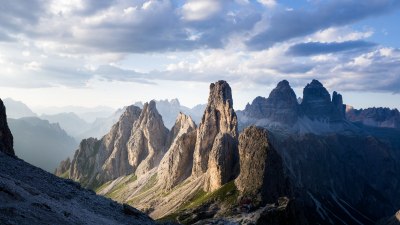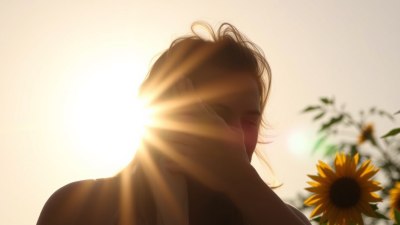Why Mountaintops Create Their Own Mini Weather Systems
Discover how mountaintops influence weather patterns and create unique microclimates.

Mountaintops have fascinated humans for centuries, not only for their breathtaking views but also for their unique weather phenomena. The altitude and geographical features of mountains significantly influence local weather systems, leading to the creation of distinct microclimates that can vary dramatically over short distances. This article explores the fascinating ways in which mountaintops generate their own mini weather systems, delving into aspects such as elevation, temperature fluctuations, wind patterns, and the interaction with surrounding environments.
Understanding Elevation and Its Impact
The first factor to consider when exploring how mountaintops create their own weather systems is elevation. As altitude increases, the atmosphere becomes thinner and experiences a significant drop in temperature. This phenomenon, known as the adiabatic lapse rate, affects how air masses behave as they rise over mountains. When warm, moist air encounters the cooler temperatures at high elevations, it cools and condenses, leading to cloud formation and precipitation. This is why mountaintops often have different weather conditions compared to the valleys below.
Temperature and Precipitation Patterns
Temperature variation is not just a matter of altitude; it also depends on the time of year. In summer, mountaintops can create localized weather conditions that differ from surrounding areas. While the valleys may bask in warm weather, mountaintops can retain cooler temperatures, leading to the formation of localized thunderstorms. These storms can produce heavy precipitation in the form of rain or snow, resulting in a different ecological environment on the mountaintops, often referred to as a 'rain shadow' effect.
Wind Patterns and Their Role
Wind is another critical component in understanding how mountaintops generate their weather. Mountains can significantly alter wind currents. As winds blow towards a mountain, they are forced to rise, causing expansion and cooling. This can lead to cloud formation on the windward side and clear skies on the leeward side, creating stark contrasts in weather conditions. The phenomenon of orographic lift plays a crucial role here, as it results in increased precipitation on one side of the mountain while the opposite side may remain dry.
Microclimates and Biodiversity
Mountaintops often host unique ecosystems due to their varying microclimates. Different elevations can result in diverse habitats that support a wide range of plant and animal species. For example, the temperature, humidity, and type of vegetation can vastly differ even between adjacent slopes of the same mountain. This biodiversity is often a result of the specific weather patterns that develop in these regions, making mountaintops critical areas for conservation.
The Role of Topography
The physical shape and height of a mountain also affect how air moves around it. Isolated peaks, for example, can create localized weather events that are not observed in larger mountain ranges. The steepness of the terrain can cause turbulent air flows, leading to unpredictable weather conditions such as sudden rain showers or temperature drops. This interplay between topography and weather systems is essential for understanding the unique climate of mountaintops.
Climate Change Impacts
With the ongoing effects of climate change, the weather systems associated with mountaintops are also evolving. As global temperatures rise, we see shifts in precipitation patterns and increased frequency of extreme weather incidents. These changes not only affect the local climate but also threaten the delicate ecosystems that thrive in these high-altitude environments. Understanding how mountaintops interact with changing weather patterns is essential for developing effective conservation strategies.
Meteorological Research on Mountains
Scientists continue to study mountaintops to gain deeper insights into localized weather systems. Meteorological research is often conducted using a combination of ground-based observations and remote sensing technologies. This work helps to develop predictive models that can forecast weather events specific to mountainous regions. These models are crucial for hikers, climbers, and inhabitants of the valleys that lie below, allowing for better preparation against sudden weather changes.
Case Studies of Unique Weather Events
Several notable case studies highlight the relationship between mountaintops and weather. For instance, the Sierra Nevada mountains in California are known for their orographic rains, which create lush ecosystems on the windward side while leaving the eastern slopes dry. Similarly, the Alps experience significant snowfall due to the moisture-laden air that rises and cools as it traverses the mountains, creating winter sports destinations but also challenging conditions for ski resorts. These case studies illustrate the complex dynamics between mountains and their associated weather phenomena.
The Complexity of Mountaintops and Weather
In conclusion, mountaintops create their own mini weather systems through a variety of interconnected factors, including elevation, wind patterns, and topography. These elements work together to create unique microclimates that can have profound effects on local ecosystems and biodiversity. As climate change continues to pose challenges for these high-altitude environments, ongoing research is critical to understanding and preserving the intricate relationships between mountaintops and their weather systems.











